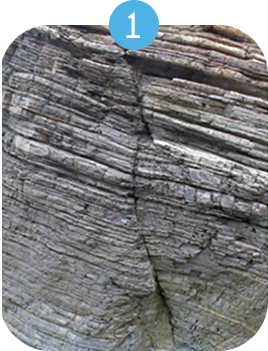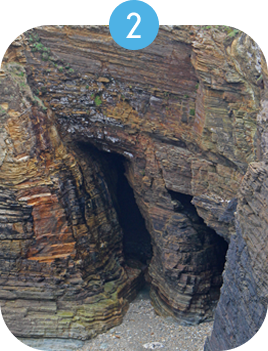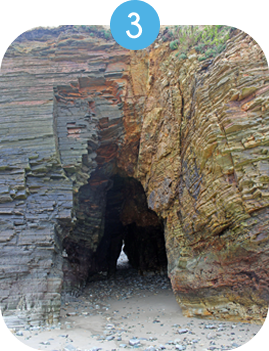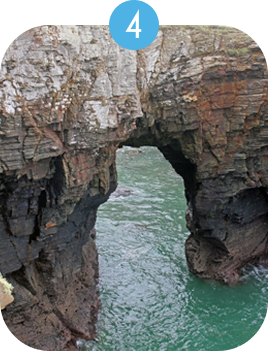History and Geology
History and Geology of As Catedrais Beach
As Catedrais Beach, one of the most iconic landscapes on the Galician coast, is a natural wonder that illustrates how time and nature have shaped the land over millions of years. This site not only dazzles with its beauty but also reveals the complex geological processes that have created its unique features—from ancient rock formations to the dramatic Cantabrian shoreline.
The Origin of the Name
The original name of this natural site is Praia de Augasantas, likely in reference to an old medicinal spring once believed by locals to have healing properties.
Today, it is popularly known as Praia das Catedrais (“Beach of the Cathedrals”) due to its spectacular rock formations that resemble the flying buttresses of Gothic cathedrals.
These arches, sculpted over centuries by the power of the sea, evoke the grandeur and intricate architecture of medieval temples—turning this natural monument into a truly unique setting.

Geology and Geomorphology of the Beach
A Landscape Shaped Over Millions of Years
The rocks that form As Catedrais Beach have a geological history that dates back approximately 500 million years. Composed mainly of quartzite and slate, these rocks originated along the ancient shores of the Southern Hemisphere. Over millions of years, tectonic pressure transformed and uplifted them, forming a massive mountain range comparable in height to today’s Himalayas. Around 350 million years ago, the collision between the supercontinents Laurussia and Gondwana gave rise to this immense cordillera.
Throughout millennia, this rocky base has endured tectonic shifts, sea level changes, and the erosive forces of weather and waves. This long process helped form what we now know as the rasa costera—a coastal plain that stretches from Burela to San Vicente de la Barquera.
How the Arches of As Catedrais Formed
The unique landscape of As Catedrais Beach is the result of natural rock fractures and their spatial arrangement. These cracks create weak points that are gradually eroded by the constant force of the sea, carving out the iconic arches and formations that define this impressive cliff.
This evolutionary process takes place in four main stages:

Rock Fracturing
It all begins with the formation of fractures in the rock, where wave action and marine erosion concentrate their force.

Formation of Furnas or Sea Caves
Erosion deepens the fractures, creating cavities or sea caves known locally as furnas, which follow the direction of the cracks.

Connection of Furnas and Creation of “Ollos”:
As multiple caves connect, sections of the ceiling collapse, forming depressions known as ollos—a characteristic feature of this landscape.

Emergence of Rock Arches:
In the final stage, erosion fully pierces the rock, shaping the spectacular natural stone arches. These are fragile, unstable structures, and only the most resistant withstand the power of the sea.
This transformative process continues today, meaning As Catedrais Beach is still evolving—offering a living geological story written in stone, tide after tide.
